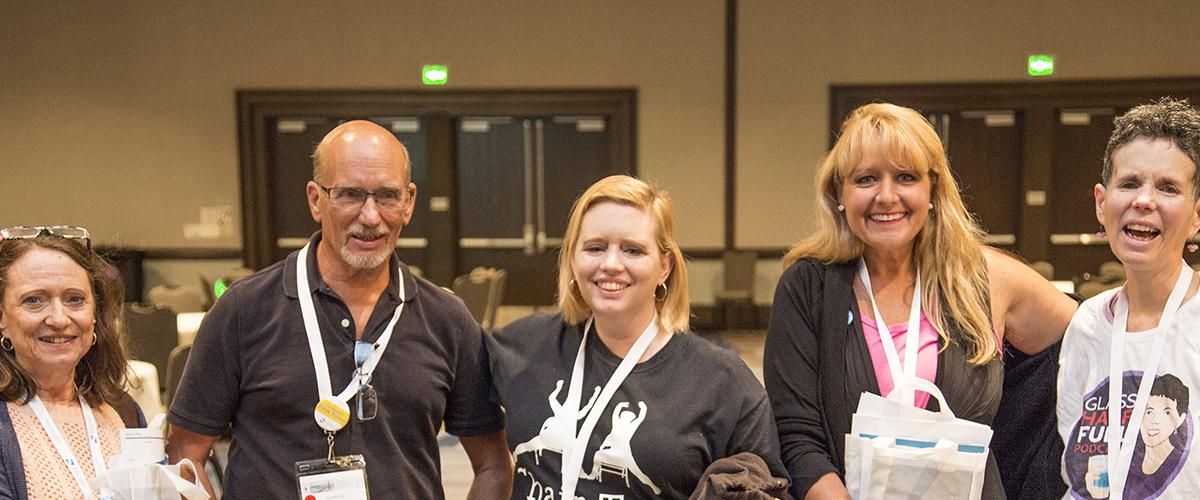Induced pluripotential stem cell (iPSC) technology has provided opportunities to better understand disease mechanisms as well as to facilitate drug discovery and development programs. With the attendant molecular, cellular, and disease backgrounds of readily expandable, patient-derived cells, iPSC “disease-in-a-dish” models have supported the translation of candidate therapeutics from discovery into clinical testing.
As long as limitations are recognized, such as potential genetic and epigenetic divergence from primary cells, iPSC modeling of myotonic dystrophy (DM) may be essential to mechanistic understanding and development of treatments for the disease, particular when patient tissues are difficult to impossible to access (e.g., CNS and heart). MDF has facilitated the development of human DM1 iPSC lines, now available through RUCDR Infinite Biologics, with DM2 lines to follow.
Development of iPSC-Derived Cardiomyocytes
Reported in a newly published study, Dr. Federica Sangiuolo (University of Rome Tor Vergata) and colleagues have developed iPSC lines from two DM1 patients and two healthy controls. They characterized cardiomyocytes derived from these lines, with the goal of determining whether they could recapitulate at least some of the major traits of the DM1 heart. Myocyte characterization included RT-qPCR to quantify RNA expression, FISH and IF for nuclear foci, RT-PCR for splice variants, whole-cell patch clamp to characterize cardiomyocyte electrophysiology, and atomic force microscopy (AFM) to characterize biomechanical traits.
Traits of iPSC-Derived Cardiomyocytes—DM1 versus Wild Type
Most iPSC-derived cardiomyocytes exhibited a ventricular-like phenotype. DM1-derived cardiomyocytes contrasted with wild type controls in expressing nuclear foci and mis-slicing of each transcript evaluated (MBNL1, MBNL2, TNNT2 and SCN5A); DM1 derivatives also showed down-regulation of key cardiac ion channel transcripts (CACNA1C, KCNH2, KCNQ1, KCND3, and SCH5A) compared with controls. The research team noted novel differences in nuclear morphology in DM1 derivatives, potentially related to altered expression of lamin A.
Whole-cell patch clamp recordings of disaggregated single cardiomyocytes showed an abnormal electrophysiological profile only in the DM1 derivatives. DM1 ventricular myocyte-like derivatives exhibited lower spontaneous action potential rates, lower peak amplitude, and longer time to reach peak from threshold. Electrophysiologic parameters of DM1 cardiomyocytes could be altered by drugs targeting cardiac ion channels.
Using AFM, the research team identified differences in beat frequency and synchronicity of beats in DM1 iPSC-derived cardiomyocytes—describing the overall pattern as indicative of instability, with reduced frequency and the appearance of non-synchronous oscillation patterns when compared to wild type. The predominance of ventricular-like myocytes, and relative absence of nodal or other conduction system-related cardiomyocytes, may make it more difficult for iPSC-based models to be informative of the conduction system-specific abnormalities known to characterize DM1.
Overall, DM1 iPSC-derived cardiomyocytes recapitulated the main morphologic and molecular markers of the disease, including CTG expansions, nuclear foci, splicopathy of the mRNAs evaluated, and altered expression of several known cardiac ion channels. Alterations in electrophysiological parameters and biomechanical behavior were interpreted as consistent with unstable beating.
Reference:
Modelling the pathogenesis of Myotonic Dystrophy type 1 cardiac phenotype through human iPSC-derived cardiomyocytes.
Spitalieri P, Talarico RV, Caioli S, Murdocca M, Serafino A, Girasole M, Dinarelli S, Longo G, Pucci S, Botta A, Novelli G, Zona C, Mango R, Sangiuolo F.
J Mol Cell Cardiol. 2018 Mar 15. pii: S0022-2828(18)30083-X. doi: 10.1016/j.yjmcc.2018.03.012. [Epub ahead of print]

